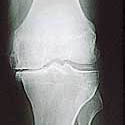A qualitative study on patients with knee osteoarthritis to evaluate the influence of different pain patterns on patients’ quality of life and to find out patients’ interpretation and coping strategies for the disease
34
4
86
0
 Smart Citations
Smart Citations34
4
86
0
Citing PublicationsSupportingMentioningContrasting
See how this article has been cited at scite.ai
scite shows how a scientific paper has been cited by providing the context of the citation, a classification describing whether it supports, mentions, or contrasts the cited claim, and a label indicating in which section the citation was made.


 https://doi.org/10.4081/rr.2011.e3
https://doi.org/10.4081/rr.2011.e3





